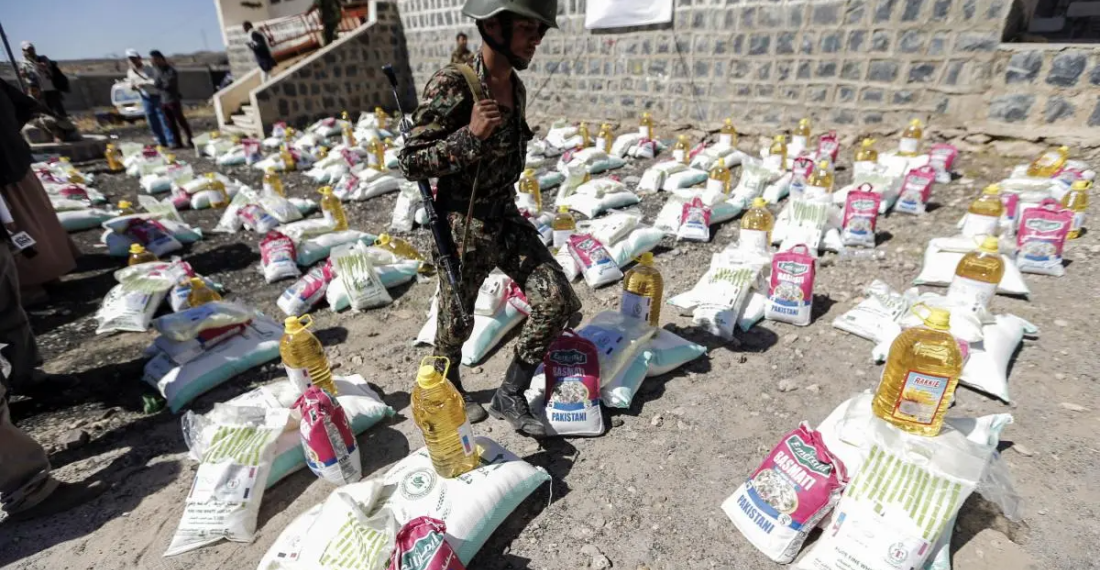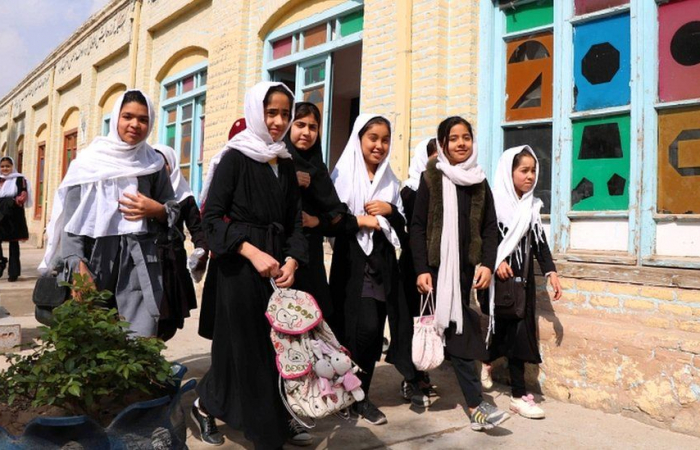Introduction
For many Yemenis, the continuous years of war have created a country without any clear destination. The country is grappling with overall economic collapse and millions are in need of emergency aid. In a country where major decisions are taken by external rather than local actors, weakness in the economy provided a ripe opportunity for actors to gain leverage and benefit from creating a war economy.
Conceptually and in its simplest form, war economy is “the continuation of the economic cycle by other means.” The purpose of using “other means” in a war economy can differ. Its negative facets, which one observes in Yemen, constitute using a wide range of opportunities, tools, and means available by the warring groups in a given context to gain economic capital or advantage, no matter how immoral these methods are and with no regards to the outcome of the conflict. Meanwhile, its positive facets can include the use of direct economic activity and laws towards increasing military spending for the purpose of defeating a foreign invasion or preventing one, hence ending or preventing a conflict. In sum, in both its positive and negative manifestations, a war economy defrauds the rules of the regular natural economy to achieve certain goals.
War economy in Yemen was feasible due to the already existing wide range of challenges facing the Yemeni state, the most important of which are financial and administrative corruption, lack of competencies, nepotism, and a poor export portfolio. The use of war economy tactics by warring parties to increase revenue is likely to complicate such challenges.
Challenges leading towards a war economy
The Yemeni economy, unfortunately, depends mainly on oil and gas revenues, which represent 70-80% of the government's budget and 90% of total exports. The former regime relied on the oil rentier economy, international aid and expatriate remittances, which hindered the building of a strong national economy. Yemen also witnessed periods of political and social instability, which led to a series of internal conflicts, sometimes supported by external regional support and intervention, adding an additional burden on the country's economy. Such events, besides the country’s dependence on imports, cultivated a perception among the international community that the government is weak, dishonest, and unreliable.
The production of oil and gas was halted in the aftermath of the Houthi coup against the government in 2014 and international aid, in the form of grants and loans for development, also diminished as the main concern of the international community in Yemen shifted to security and humanitarian issues. The first two years of the war represented an economic truce, during which all foreign exchange reserves were depleted. After that, the Central Bank was transferred from Sana’a to Aden leading to a monetary division which made the reality of the daily economic life of the simple citizen very complicated. Carrying out financial transactions was very difficult due to a divided financial system and the absence of comprehensive financial and monetary laws and regulations.
The loss of human life also had economic repercussions. Most casualties of the war were in the age group that is supposed to be at the height of their productivity and were the breadwinners of their families. In their absence, families are left without a breadwinner causing an economic and social burden on the state and society.
Commenting on this matter, Nabil Al-Sharabi, a researcher specializing in economic affairs, says that “as a result of what the public and private economies were exposed to, the microeconomics relating to families and individuals also suffered great damage… Hundreds of thousands of workers lost their only sources of income, state employees lost their steady stream of salaries, and many became unable to educate their children or provide the basic needs of their families.”
The exploitation of the war economy in Yemen
- United Nations and other humanitarian organisations
Data from various Yemeni sources show that in areas where major political actors lack or are unable to exercise legitimacy, other non-traditional actors (usually tribal heads) exercise state functions. International organizations seeking to provide assistance often have to collude with those non-traditional forces. Aid organizations often work in tandem with civil society organizations because the latter can mobilize on the ground by recruiting local populations and reaching out to remote geographic locations. However, civil society organizations find themselves in conflict with non-traditional authorities, as they are seen as arms of foreign powers and their work as aid providers is viewed as a foreign socio-political tool that is, in turn, met with rejection and obstruction. This unsustainable situation causes humanitarian organizations to pay bribes or taxes and abide by rules that jeopardize its neutrality. Income from such taxes is then used to finance armed operations, pay the salaries of fighters, as well as recruit children into battles.
Investigations by the Associated Press (AP) show aid manipulation by the Houthis. The rebel group has made granting access to areas under its control conditional on a flurry of conditions that aid agencies have initially and later partially rejected, in part because it would give the Houthis greater leverage over who receives aid. With aid organizations’ indecisiveness and swinging back and forth with the Houthis’ demands, the latter was able to gain the upper hand, causing disruptions in aid delivery and allowing the Houthis to divert aid in support of their war effort.
- Armed groups and militias
Other than humanitarian organizations, the war economy is dominated by three non-state armed and regionally supported groups that have military control over important economic capabilities distributed over different geographical areas: the Houthi militia, the Southern Transitional Council (STC), and some remnants of the old Republican Guard, now refurbished as National Resistance. This section looks into the measures and practices taken by these forces.
- Revenues and customs duties in areas controlled by armed groups:
Local revenues are among the most important financial resources that groups acquire in areas under their control, as these groups depend on them to finance their war.
According to Yemen’s official government claims, Houthi revenues from areas under their control reach more than 1.7 billion dollars annually as they imposed new customs duties to counter the scarcity of revenues. The Houthis collected those new customs tariffs by creating collection points and outlets at some of the entrances to the cities as well as major ports under their control. The port of Hodeidah is one of the most important and largest Yemeni seaports under the control of the Houthi group through which the majority of goods enter the northern parts of Yemen.
In Al-Mokha region, the main port is under the control of National Resistance, which controls all commercial operations, imposes customs tariffs, and controls import/export operations. Funds from these resources represent an independent source of revenues and in turn financing for the National Resistance.
In the southern port of Aden, the STC shares the revenues with the government while also collecting its own taxes and customs duties. The STC is also able to exert influence by having its own administrative apparatus parallel to the official government allowing it to gain extra revenues.
- Looting and commercialization of humanitarian aid
All armed groups outside the control of the state have exploited the humanitarian situation in their areas of control. As described earlier, this is evident in reports of seizure, looting and restrictions of aid whilst also diverting it for political and military purposes. Besides the seizure of aid, armed groups have also developed a commercial market to manage this aid through subcontractors and parallel organizations that buy and sell aid rather than provide it at no cost.
- Checkpoint collections
On all main and secondary roads leading to the main cities and on all sides of the frontline, there are hundreds of security checkpoints belonging to the militias. These points impose unofficial fees on all types of commercial products as well as on travellers. These extra fees, gained initially via extortion, are additional to the taxes and customs on goods at entry points and ports. Collecting the extra fees later became a seamless process and normalized as a fixed regular source of income.
- Smuggling
The Yemeni coastline, which is 2,500 kilometres long and with connections to major maritime trade routes, has turned into a frontline for the smuggling of medical supplies, consumer goods, cigarettes, weapons, and drugs, among other things. Revenues from smuggling constitute a major source of revenue for armed groups and militias. It has been an easy source of revenue due to militias’ control of key military and security structures. Smuggling routes and mechanisms vary across Yemen and with varying degrees of foreign support, and it is not yet clear if different militias cooperate in smuggling, and if so, to what extent.
Such practices have allowed the armed groups and militias to withstand, continue, and obtain financial means to fund the war effort, stay resolute in the current conflict and provide daily logistical support to the front, establishing a parallel war economy as an alternative to the official economy.
Conclusion: addressing the war economy in Yemen
Various political forces that were previously marginalized or unknown are participating in the decline of the traditional economy and the emergence of the war economy that is largely characterised by corruption in many parts of daily life. Despite the existence of anti-corruption agencies and laws, these laws are not enforced. Yet, according to many experts, the main dilemma of combating corruption and the war economy in Yemen remains the lack of political will. Any initiative to combat corruption and address the economic situation in Yemen must obtain not only political will but also rely on the will of the people to pressure the authorities to do something about it.
An upcoming political settlement must include a set of urgent and basic economic measures for the purpose of restoring the war economy to a regular economy. Returning to this state of the regular economy will require an analysis of the pre-war state of the economy and tracking all the changes imposed by the war and the warring parties, thus setting economic goals to reverse the process. Monetary divisions can be overcome by unifying the monetary policies of the Central Bank and forming a board of directors in the future that will approve measures to adopt singular monetary policies.
Taking such crucial steps to reverse the chain of action will undoubtedly require a comprehensive political agreement. The future of the Yemeni economy remains dependent on political decisions that can change the reality of the current political balance in favour of a strong central government that controls all sources of revenue and management of assets. Any upcoming political talks will eventually reveal the possibility of whether this strong central government can be achieved.
References
Ballentine, K, and Nitzschke, H (2005). The political economy of civil war and conflict transformation. Berghof Research Center for Constructive Conflict Management, Berlin. http://bit.ly/2kbtsWB.
Culbertson, A. (2016, October 8). FOREIGN AID FARCE: Millions siphoned off by Yemen government from desperate civilians, Sunday Express. http://bit.ly/2CARQpF.
Elayah, M., & Abu-Osba, B. (2017). Geneva Conference for Relieving Yemen: between the hopes and the complex reality. Awam Center for Peacebuilding and Development & Centre for International Development Issues Nijmegen.
Elayah, M., Ahmed, N. (2022). Humanitarian Aid in Yemen: A Crisis of Sovereignty and Inevitable Harm. In: AlDajani, I.M., Leiner, M. (eds) Reconciliation, Heritage and Social Inclusion in the Middle East and North Africa. Springer, Cham. https://doi.org/10.1007/978-3-031-08713-4_12.
McVeigh, K. (2019, June 17). Yemen's Houthi rebels accused of diverting food aid from hungry. The Guardian.
Michael. M. (2020, February 19). Yemen’s Houthi rebels impeding UN aid flow, demand a cut. Associated Press.
Ministry of Industry and Trade. (n.d.). Snapshot about Yemen. https://moit.gov.ye/moit/ar/%D8%B9%D9%86-%D8%A7%D9%84%D9%8A%D9%85%D9%86
Ministry of Planning and International Cooperation. (2018, June). Bulletin of economic and social developments. Issue 34, Pages (2-3).
Mohsen, Y.S. (2010). Mapping Corruption in Yemen. Yemeni Observatory for Human Rights
Omar, A. (2023, February 12). Corruption hinders economic development in Yemen. Sawt Alamal.






